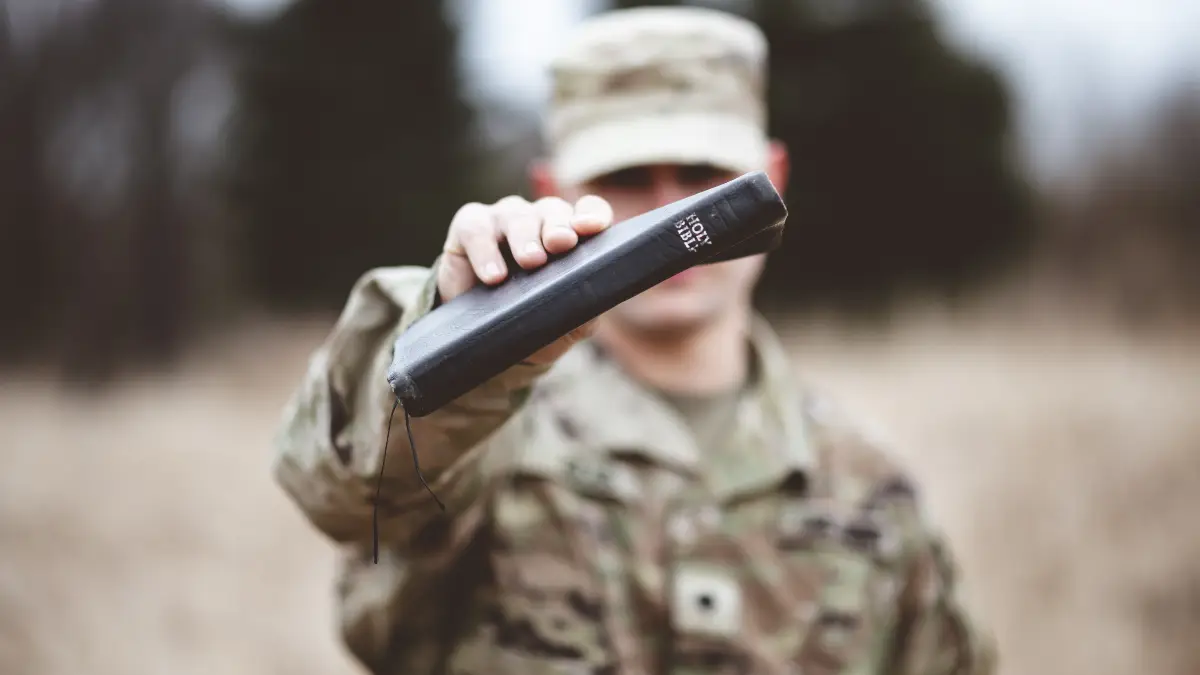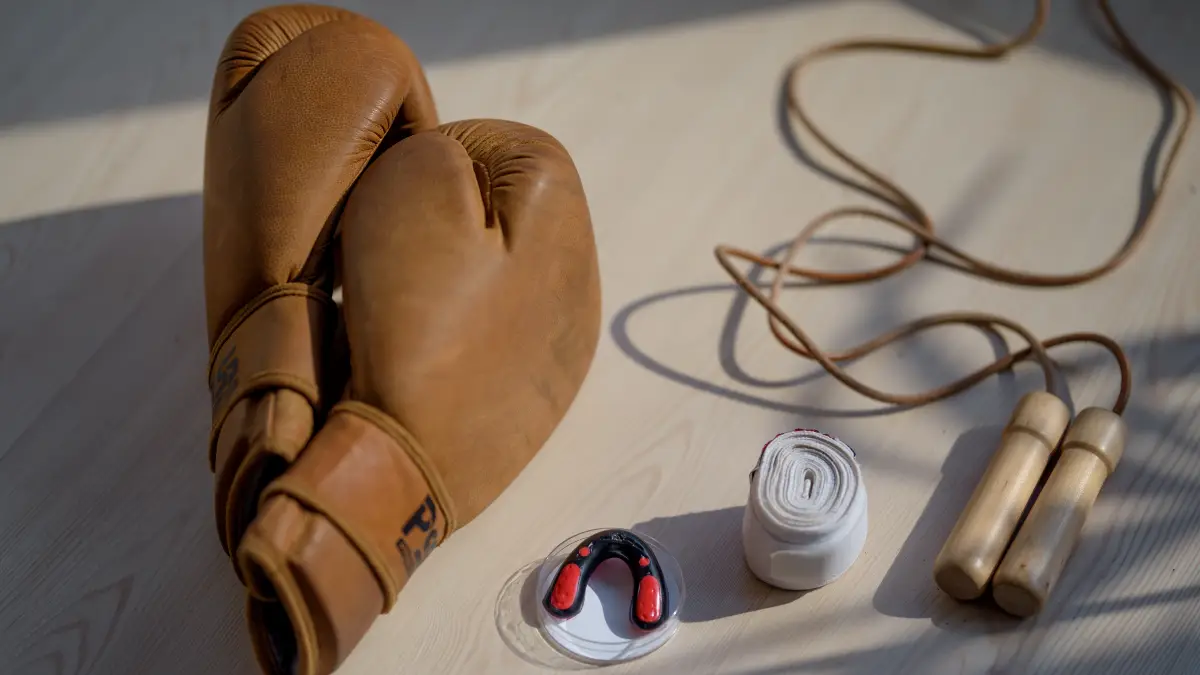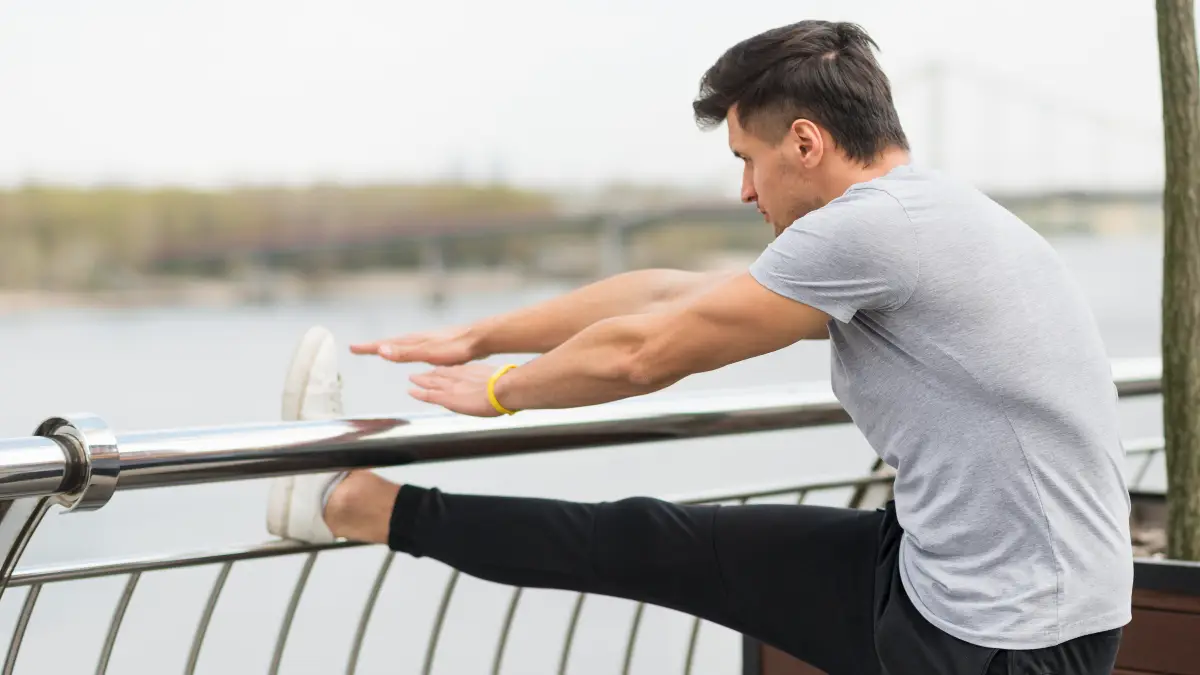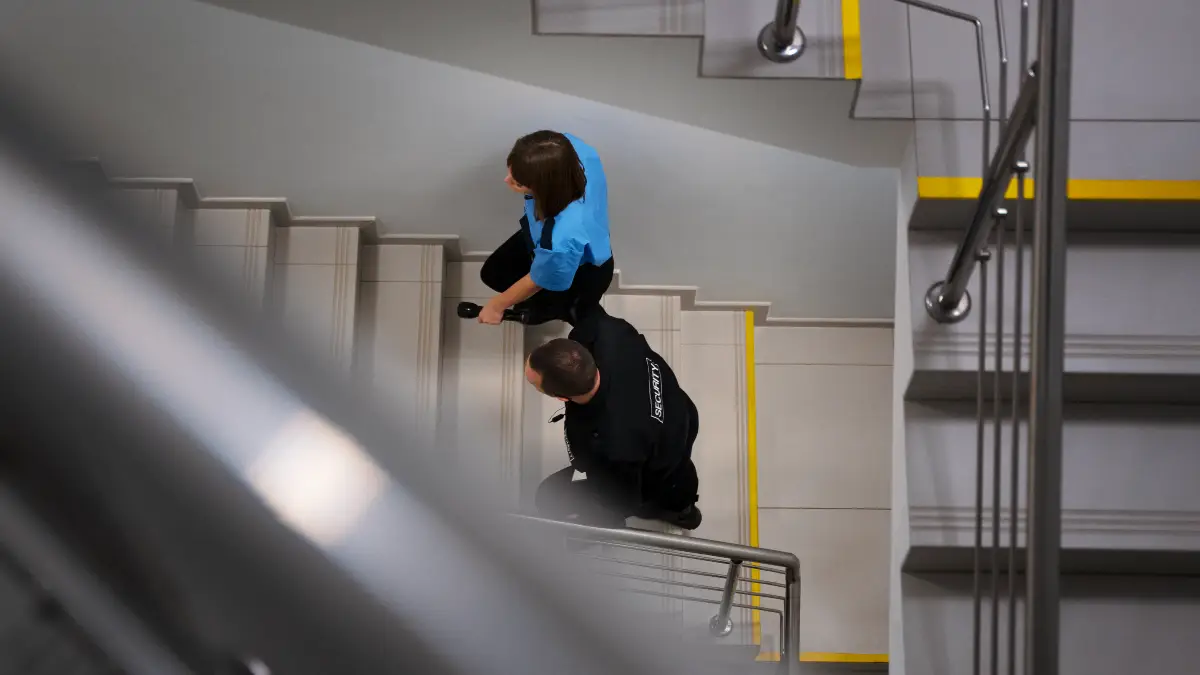Feeling vulnerable in an unsafe world is scary. You don’t need a black belt or a weapon to protect yourself effectively. Every day, ordinary people successfully defend themselves using simple, legal techniques that require no special training.
In this guide, you’ll discover five proven methods backed by self-defense experts and legal professionals. These techniques use your body’s natural instincts and everyday objects you already carry.
Whether you’re walking to your car at night or traveling alone, these strategies will help you stay safe while staying within legal boundaries. The best part? You can start using them immediately—no gym membership required.
1. Master Situational Awareness (Your Primary Defense)

According to Women’s Self Defense Institute analysis of 3,000 assaults, situational awareness prevents 50% of attacks. This isn’t paranoia—it’s smart preparation.
Why It Works
Research shows 43% of predatory behavior studies confirm attackers choose victims who seem vulnerable and unaware. Criminals want easy targets.
They look for people who are distracted, preoccupied, or oblivious to their surroundings. Simply appearing alert makes you a “hard target” that most attackers will avoid.
The Color Code System That Could Save Your Life
Military and law enforcement experts use Cooper’s Color Code system to stay safe. You can use it too.
Completely unaware and distracted. You’re checking social media while walking alone at night. This makes you vulnerable.
Relaxed alertness with regular environment scans. You notice who’s around you and what’s happening nearby. This is your goal state for daily life.
You’ve spotted something concerning. Maybe someone is following you or acting strangely. Your attention focuses on this potential threat.
The threat is real and immediate. You’re preparing to respond—whether that means running away, calling for help, or defending yourself.
The OODA Loop: Your Mental Defense Framework
The OODA Loop (Observe, Orient, Decide, Act) gives you a mental framework for handling potential threats.
Use all your senses. What do you see, hear, and feel? Notice people, exits, and unusual behaviors.
Process what you’ve observed. Is that person’s body language threatening? Why is someone standing in that dark corner?
Choose your response based on your observations. Will you change direction, move to a public area, or prepare to defend yourself?
Carry out your decision quickly and commit fully. Half-measures rarely work in dangerous situations.
Put This Into Practice Today
- Trust your gut – If something feels wrong, it probably is. Our brains process danger cues faster than we consciously recognize them.
- Put your phone away – Looking at your phone while walking makes you an easy target. Check messages after reaching your destination.
- Know your exits – When you enter any building or space, immediately locate all possible exit routes.
- Watch body language – Notice tense postures, staring, or people trying to get unusually close to you.
- Stay in well-lit areas – Criminals prefer darkness and isolation. Stick to populated, well-lit routes whenever possible.
- Change your routines – Taking the same route at the same time makes you predictable. Mix it up when you can.
What Experts Say
“Fear is a survival signal, not weakness,” explains Gavin de Becker, Presidential security advisor and author of “The Gift of Fear.” “Victims usually feel a sense of fear before any threat takes place.”
Rory Miller, a 17-year corrections veteran who worked with violent offenders, teaches that “Awareness and avoidance are primary tools—study the problem, not just solutions.”
Tech That Boosts Your Awareness
The personal safety app market hit $1.8 billion in 2024 and will reach $7 billion by 2033. These tools help you stay safe.
- Noonlight: Press and hold a button when nervous; release it without entering your PIN and emergency services are contacted with your location.
- bSafe: Voice-activated alerts send your location to emergency contacts.
- Hollie Guard: Tracks your journey and alerts contacts if you don’t check in.
- Emergency SOS: Press your phone’s power button five or more times to trigger emergency calls (works on both iPhone and Android).
Legal Advantage
Enhanced awareness is always legal and strengthens any self-defense claim by showing you took reasonable steps to avoid confrontation. Courts look favorably on people who demonstrate they tried to prevent problems before they happened.
Take Action This Week
- Download one personal safety app and set it up with emergency contacts.
- Practice “Condition Yellow” awareness during your daily activities for one week.
- Identify three escape routes in places you visit often (work, gym, favorite restaurants).
Awareness isn’t about being paranoid—it’s about being prepared.
2. Verbal De-Escalation and Boundary Setting

Nine out of ten spontaneous confrontations can be defused with proper de-escalation if emotions are managed early. Your voice can be your most powerful defense tool.
Why It Works
Most confrontations are “social violence”—emotional, spontaneous reactions—rather than planned predatory attacks.
When you use verbal de-escalation, you force the aggressor to use their reasoning brain, which reduces emotional arousal. Setting clear boundaries early stops many situations from turning physical.
When De-Escalation Works (and When It Doesn’t)
EFFECTIVE FOR:
- Spontaneous, emotionally-charged situations
- Road rage incidents
- Bar and social confrontations
- Disputes with acquaintances
NOT EFFECTIVE FOR:
- Pre-planned attacks (robbery, planned assault)
- Confrontations with intoxicated or drugged individuals
- Anti-social violence (when someone intends to harm you regardless)
- Active assaults already in progress
7 Core De-Escalation Techniques That Actually Work
- Use a calm, low voice – High-pitched, tight voices signal fear and can escalate the situation. Speak slowly and keep your tone steady.
- Ask open-ended questions – “What can I do to help resolve this?” forces the person to think logically rather than react emotionally.
- Acknowledge feelings without agreeing – “I can see you’re upset” shows respect without admitting fault or fueling anger.
- Set clear boundaries respectfully – “I need you to stay at least three feet away from me” gives clear instructions without being confrontational.
- Keep non-threatening body language – Keep hands visible, maintain a relaxed posture, and never put hands in pockets (which can suggest you’re hiding a weapon).
- Ignore insults – Focus on de-escalation, not defending your pride or responding to name-calling.
- Don’t argue or get defensive – Remember your goal is reducing tension, not winning a debate or proving you’re right.
The 3 Levels of Boundary Setting
Level 1 – Calm-Assertive:
- “I need you to step back, please”
- “Don’t get any closer”
- Use eye contact and confident posture
Level 2 – Firm Commands:
- “BACK UP NOW!”
- “STOP! DO NOT COME CLOSER!”
- Use louder volume and a commanding tone
Level 3 – Public Alert:
- “CALL 911!”
- “I NEED HELP!”
- “FIRE!” (People respond more quickly to “fire” than “help”)
Body Language That Deters Attacks
- Defensive stance: Position your body sideways, dominant leg slightly back, hands up near face level (appears non-aggressive but ready)
- Confident posture: Stand tall, maintain eye contact
- Take up space: Don’t make yourself small or apologetic
- Stable base: Lower your center of gravity slightly for better stability
Expert Advice
The simple ability to look someone in the eye is a huge, underappreciated self-defense strategy. I’m not going to attack her because she’s not the easy target.
Evy Poumpouras, Former Secret Service agent and author of “Becoming Bulletproof,” teaches that “True strength is found in the mind, not the body. Learn to read people and influence situations.”
Legal Benefits of De-Escalation
Verbal de-escalation provides strong legal protection. Courts favor defendants who showed restraint and attempted to defuse the situation before physical action.
In states with a duty to retreat, verbal attempts to resolve the conflict strengthen your legal defense. If possible, have witnesses or record threats (where legal) to document the aggressor’s behavior.
When to Stop Trying to Talk
Stop de-escalating and switch to escape or physical defense if:
- The person becomes more agitated despite your efforts
- They ignore your boundaries and continue to approach
- They display a weapon
- They make specific threats of immediate harm
Practice These Skills This Week
- Practice saying firm commands out loud at home to build comfort with your assertive voice
- Role-play boundary-setting scenarios with a trusted friend
- Memorize 2-3 de-escalation phrases you can recall quickly under stress
Your voice is a powerful tool that can prevent many confrontations from ever becoming physical.
3. Strategic Use of Everyday Objects

You don’t need weapons to be prepared. The keys in your pocket, the pen in your bag, and the coffee in your hand can all create critical seconds for escape.
Why This Approach Works
Everyday objects extend your reach and add force to defensive moves. You can legally carry them anywhere without special permits.
Most attackers don’t expect resistance with common items, giving you a surprise advantage. Having these options in mind also boosts your confidence in potentially dangerous situations.
8 Legal Everyday Defense Tools You Already Have
Keys:
- Hold between fingers to add striking power, or grip a single key extending from your first
- Use your car key alarm to create noise and attract attention
- 100% legal everywhere; no one can claim you were carrying a weapon
Pen/Pencil:
- A strike tool for pressure points (eyes, throat, soft tissue)
- Grip tightly and thrust with force
- Firm, pointed object that won’t break easily under pressure
Metal Water Bottle:
- A blunt force tool you can swing at arms or head
- Heavy, durable, and extends your reach
Tactical Flashlight:
- Disorient attacker with bright light (especially strobe function), or use as a striking tool
- 130+ lumen flashlight with strobe feature
- It’s a legitimate everyday item no one questions you carrying
Bag/Purse:
- Swing as distraction or striking tool (heavier items inside increase effectiveness)
- Grip strap firmly, swing in wide arc to create distance
- Throw in the opposite direction as a distraction while escaping
Hot Beverage:
- How to use: Throw in attacker’s face for immediate distraction
- Effect: Causes pain, temporary vision problems, and panic response
Umbrella:
- A jabbing tool for distance or striking weapon
- Thrust pointed end toward face/body, or use handle to hook and pull
Belt:
- A whipping/striking tool to create distance
- Remove quickly and swing the buckle end with force
4 Critical Principles for Using Everyday Objects
- Your goal is ESCAPE, not winning – Create an opportunity to run away, not to defeat the attacker
- Target vulnerable areas: Face, eyes, throat, groin, knees
- Commit fully: Half-hearted strikes rarely work; use decisive force
- Run immediately: After striking, RUN to safety without delay
Know the Legal Boundaries
Using an object against an unarmed attacker may raise questions; you must show reasonable fear and proportional response. Courts distinguish between carrying items for normal purposes versus carrying them as concealed weapons.
Explain you grabbed the nearest available object to escape an immediate threat. These items remain legal in schools, airports, courthouses where actual weapons are prohibited.
Stand Your Ground states are more lenient about using objects for self-defense. In Duty to Retreat states, you must still prove there was no safe escape route before using force.
Expert Insights
Nothing we do is competition legal, because your life’s no game. Simple, physics-based techniques work better than complicated martial arts.
Techniques should provide the least danger and risk for the defender. Use whatever tools are available.
How to Practice Without Getting Hurt
- Identify which everyday items you regularly carry
- Practice quickly accessing keys, pen, or phone from your pocket/bag (aim for 2-3 second retrieval)
- Mentally rehearse scenarios where each item could create escape opportunities
- Consider upgrading to tactical versions (tactical pen, brighter flashlight) that serve dual purposes
Simple Actions to Take This Week
- Place your keys in an easily accessible pocket/bag location before walking to your car
- Buy a tactical flashlight for nighttime situations (120+ lumens recommended)
- Practice removing your belt quickly (3-second drill)
- Identify 3 items you carry daily that could serve a defensive purpose
The best everyday object is the one you actually have with you when needed.
4. 5 Simple Physical Moves Anyone Can Use to Stay Safe

You don’t need years of martial arts training to defend yourself. These five techniques use your body’s natural strengths to target vulnerable areas—and they’re perfectly legal when you’re facing a real threat.
The Most Important Rule: Fight to ESCAPE, Not to Win
Your only goal is to create an opening to run away to safety. Don’t stick around to “teach someone a lesson” or prove how tough you are.
Every technique should be followed immediately by escape. Once you’ve created a chance to get away, take it. Continuing to fight after the threat is gone could land you in legal trouble.
Know Your Legal Rights Before You Act
- Use reasonable force: Your response must match the threat. Don’t bring a hammer to a shoving match.
- Non-deadly force is justified when: Someone threatens to hurt you, assaults you, or touches you without permission.
- Deadly force has strict limits: Generally only allowed when you’re facing possible death or serious injury.
- Size matters legally: Courts recognize that smaller people may need to use greater force against larger attackers.
- Stop when the threat ends: Continuing to hit someone who’s retreating or neutralized could get you charged with assault.
5 Effective Moves That Need No Training
1. Palm Heel Strike: Better Than Punching
Nose, jaw, or throat
Open your hand, bend your fingers slightly back, and thrust the heel of your palm upward with force.
Why it works:
- Won’t hurt your hand like a closed fist
- Delivers maximum force
- Can break a nose or disorient an attacker
- Uses your body’s natural pushing motion
This is considered a proportional response to a physical attack. Strikes to the throat may raise questions unless you’re facing a bigger, stronger attacker.
2. Groin Kick: Simple But Effective
Between the attacker’s legs
Kick upward with the top of your foot in a “scooping” motion, or bring your knee up sharply.
Why it works:
- Instantly disables an attacker regardless of size
- Uses a natural kicking motion
- Creates critical seconds for escape
- Works from many positions
Courts recognize this as reasonable self-defense against assault. Works against both male and female attackers, as it targets the pelvic bone.
3. Elbow Strike: Your Strongest Weapon at Close Range
Jaw, temple, ribs, or strike backward if grabbed from behind. Bring your elbow back, then swing forward with force. Turn your entire body for power.
Why it works:
- Your elbows are naturally strong
- Works well when grabbed or in a bear hug
- Uses large muscle groups
- Hard for attackers to block
Completely justified when someone has grabbed you or is holding you against your will.
4. Wrist Grab Escape: Break Free Fast
Get free from someone holding your wrist
Rotate your wrist TOWARD the attacker’s thumb (the weakest point of their grip) while pulling back sharply.
Why it works:
- Uses the grip’s natural weak point
- Doesn’t require you to be stronger
- Works no matter how strong their grip
- Creates an immediate escape chance
This is a classic defense against someone trying to control or kidnap you—fully justified.
5. Eye Gouge: ONLY for Life-Threatening Situations
Attacker’s eyes. Use your fingers to press or rake into the eyes with force.
Why it works:
- Forces immediate release
- Causes temporary blindness
- Works regardless of size difference
- Triggers an instinctive protective response
Courts may view eye gouging as excessive unless:
- You face a much larger/stronger attacker
- There are multiple attackers
- The attacker has a weapon
- It’s a sexual assault or kidnapping attempt
- You have no other escape route
- You reasonably fear death or serious injury
Use this ONLY as a last resort when your life is in danger.
How to Escape Common Holds
Break Free When Grabbed From Behind (Arms Free):
- Drop your weight and lower your center of gravity
- Strike backward with your elbow to the head or ribs
- Stomp hard on the attacker’s feet
- Kick their shins or knees
- RUN as soon as they release you
Break Free When Grabbed From Behind (Arms Trapped):
- Drop your weight immediately
- Wriggle side-to-side to create space
- Stomp their feet and kick backward into their shins
- Drop to the ground if needed (this makes you harder to carry)
- RUN when released
Break Free From a Choke Hold:
- Tuck your chin to protect your throat (CRITICAL—prevents blackout)
- Turn INTO the attacker to reduce pressure
- Use both hands to pry their arm away
- Strike their ribs or head with your elbow
- RUN when released
Why These Techniques Work for Everyone:
- They use big muscle movements that work even when you’re stressed
- They target vulnerable areas everyone has
- They use physics and body mechanics, not pure strength
- You can learn and remember them with minimal practice
- They focus on helping you escape, not fancy combinations
What Self-Defense Experts Say:
“The only reliable skills are those mastered into muscle memory through practice. Jiu-jitsu is popular because it only takes weeks or months to develop core skills.
Kelly McCann (Black Belt Hall of Fame, former Marine Major) teaches: “Simple, brutal, direct techniques beat complicated martial arts. Combat-proven methods need minimal training time.”
“The body’s natural flinch response can become your protection. We’ve ‘hacked’ self-defense by working with your body’s natural reactions.”
How to Practice Safely:
- Practice the palm heel strike motion 10 times daily to build muscle memory
- Practice wrist escapes with a partner using gentle resistance
- Shadow practice elbow strikes against an imaginary target
- Do NOT practice eye gouges (too dangerous even in training)
- Consider taking 1-2 self-defense classes to get feedback on your form
What to Do After Defending Yourself:
- Call 911 immediately and report the assault
- Take photos of any injuries
- Get contact information from witnesses
- Say clearly: “I defended myself against assault” (NOT “I fought back”)
- Get medical attention (creates documentation of injuries)
- Talk to a lawyer before giving a detailed statement
Take These Steps This Week:
- Watch online videos showing proper palm heel strike form
- Practice the wrist escape technique 5 times with a partner
- Mentally rehearse “strike and escape” scenarios in your head
- Look up free R.A.D. Systems or police-offered self-defense classes in your area
Remember: These techniques aren’t about fighting—they’re about creating a chance to escape and get to safety.
5. How to Escape Any Dangerous Situation

Statistics show 50% of attackers flee when victims actively resist. Running away isn’t cowardly—it’s smart strategy that dramatically improves your chances of staying safe.
Why Running Away Beats Fighting Every Time
Getting away from danger completely is always your best option:
- You remove yourself from harm entirely
- You avoid legal problems that might come with fighting
- You won’t get injured in a prolonged confrontation
- You prevent the situation from getting worse
- You eliminate any chance of losing a fight
Attackers look for easy victims. When you make yourself difficult to catch or control, they often give up and look elsewhere.
5 Escape Strategies That Could Save Your Life
1. Run to Safety (Your Best Defense):
Where to run:
- Well-lit areas with lots of people
- Open businesses with employees and customers
- Police stations, fire stations, or hospitals
- Toward crowds of people
- Never run to isolated areas
How to run effectively:
- Use a zig-zag pattern (makes you harder to catch)
- Throw your wallet or purse in the opposite direction as a distraction
- Don’t stop until you reach a safe place
- Head toward lights and people
- Yell loudly while running
Trying to escape proves to courts that you were afraid for your safety and weren’t the aggressor.
2. Create a Scene (Make Yourself Too Much Trouble):
Why this works:
- Witnesses scare away attackers
- It attracts help from others
- It creates confusion and gives you time to escape
- Most attackers want quiet, easy targets
Ways to create a scene:
- Yell specific commands like “FIRE!” or “CALL 911!” (people respond better to these than to screaming)
- Throw objects to create barriers
- Spit (unexpected and creates a disgusted reaction)
- Set off your car alarm
- Break something loud like a window or display
Crime avoidance and awareness beat physical techniques. The best self-defense is avoiding situations where you need to fight.
3. Never Go to a Second Location (This Rule Saves Lives):
Why it matters:
- FBI statistics show survival rates drop by over 90% if you’re moved to another location
- Attackers take victims to isolated areas to hurt them
- Your best chance of survival is to fight at the first location
What to do if someone tries to take you somewhere:
- Fight harder at the first location than you normally would
- Scream, resist, and go limp (makes you harder to carry)
- Grab onto fixed objects like poles or fences
- Make as much noise as possible
- It’s better to be injured in a public place than taken to an isolated area
Courts recognize that fighting to avoid being transported is reasonable self-defense, even if you use more force than usual.
4. Use Your Surroundings to Your Advantage:
Create barriers:
- Put cars, furniture, or doors between you and the attacker
- Lock doors and windows if you’re inside
- Use narrow spaces that are hard for attackers to navigate
Find escape routes:
- Ground floor windows
- Back doors and side exits
- Paths through crowds
- Nearby businesses
Stay fit for better escapes:
- Regular cardio helps you run longer
- Practice short sprints
- Learn to jump over or climb obstacles
- Overall fitness gives you escape advantages
5. Use Technology to Get Help Fast:
Noonlight:
- Press an SOS button to alert a monitoring center
- Tracks your journey with a timeline feature
- Connects to 911 with your location data
- Free basic version with premium options
bSafe:
- Activates with voice command (“bSafe”)
- Live streams to your emergency contacts
- GPS tracking shows your location in real time
- Records audio/video as evidence
- Creates fake calls to help you exit uncomfortable situations
Hollie Guard:
- Voice-activated alerts
- Sends your location and audio/video to emergency contacts
- Timer feature alerts contacts if you don’t check in
- 24/7 monitoring available with paid version
Built-in Phone Features:
- iPhone: Press power button 5 times for Emergency SOS
- Android: Google Personal Safety app with automatic features
- Share your location in real-time with trusted contacts
The personal safety app market is worth $1.8 billion now and will reach $7 billion by 2033. These apps give you instant help, create evidence, and share your exact location with emergency services.
Physical Safety Devices:
- 130+ decibel personal alarms (loud enough to hurt ears and force attackers away)
- Pepper spray (legal in most states for adults, works from 10-15 feet away)
- Pepper gel (doesn’t blow back in wind, more targeted)
How to Spot Dangerous People Before They Attack
Warning signs to watch for:
- Someone asking too many questions or getting unusually close
- Person positioning themselves to block your exit routes
- Someone entering your personal space despite clear boundaries
- Testing reactions with small boundary violations
- Asking for help, directions, or the time as a distraction
When to escape immediately:
- Someone keeps approaching after you’ve set clear boundaries
- You feel cornered or trapped
- Your gut instinct tells you something is wrong
- Multiple people start surrounding you
- A vehicle follows you slowly
What Safety Experts Say:
Every crime has warning signs. Trust your intuition—knowing something is wrong even when you can’t explain why.
Rachel Mahloch, founder of the Battle Woman program with 30 years of experience, “Prevention comes before reaction—spot and defuse threats BEFORE they escalate.”
Know Your Risk Factors
Higher risk situations:
- Urban areas: 29.6 violent crimes per 1,000 people
- Late night hours (especially midnight to 1 AM)
- Summer months (May through August have peak crime rates)
- Parking lots, isolated areas, and poorly lit spaces
Lower risk situations:
- Rural areas: 15.3 violent crimes per 1,000 people
- Daylight hours in populated areas
- Well-lit business districts
- Areas with visible security
Age and demographic risks:
- Ages 18-24: 43.9 per 1,000 (highest risk group)
- Ages 25-34: 33.2 per 1,000
- Never married: 33.8 per 1,000
- Household income under $25,000: 39.0 per 1,000
Your Complete Escape Plan
Before you go out:
- Make sure your safety app is active
- Share your location with someone you trust
- Fully charge your phone
- Know your destination and route
While in public:
- Stay alert (Condition Yellow awareness)
- Keep track of possible escape routes
- Stay near exits when possible
- Don’t let yourself get cornered
If threatened:
- Ask yourself: Can I escape safely right now?
- If YES: RUN immediately (don’t wait for things to get worse)
- If NO: Try verbal de-escalation, create an opportunity, then escape
- Last resort: Use physical techniques to create an escape opportunity
After escaping:
- Get to a safe place first (police station, business, crowd)
- Call 911 right away
- Write down everything while it’s fresh in your memory
- Get medical help if needed
- Contact friends or family you trust
Do These Things This Week:
- Download a personal safety app and set up your emergency contacts
- Try running in different shoes to see which ones allow you to move fastest
- Find 3 safe locations (businesses/police stations) along your regular routes
- Share your location with a trusted person when you travel alone
- Practice yelling “FIRE!” loudly (many people hesitate to yell in public)


